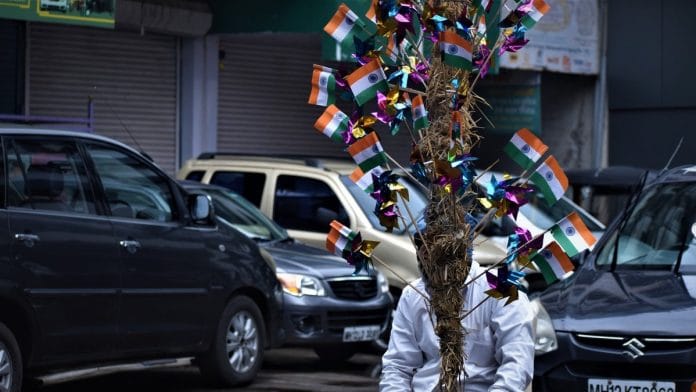Thank you dear subscribers, we are overwhelmed with your response.
The poll guarantees promised by the Congress party in its election manifesto are going to cast a shadow on the survival of a few State Government Undertakings due to the severe financial burden imposed on them by the unrealistic poll promises made by the party.
One of the 5 poll guarantees announced by the Congress party in their manifesto is to provide 200 units of free power to all the residents in Karnataka under “GRUHA JYOTHI” Scheme, irrespective of their income status. The Energy Minister Mr. K.J.George announced on 7.6.2023 that the scheme would benefit 2.14 crore households out of 2.16 crore households in Karnataka covering over 99% of the population. How can an enterprise provide free power to over 99% of its domestic consumers can still survive? Under this scheme, even the richest business families in Bangalore like Narayana Murthys, Nilekanis, Pais, Premjis and Kamaths (Zerodha) etc, are also eligible for free power if their power consumption is less than 200 units per month! What an irrational and populist decision without looking into its financial implications!
The scheme involves a staggering Rs.13000 crores loss to exchequer annually.
I checked the basic financial parameters of BESCOM (Biggest among the 5 ESCOMs) as per the Audited Financial Statements for the year ended 31.03.2022 :
| Parameter | 31.03.2022 |
| Working results | (-) Rs.294 Crores (Loss) |
| Networth (Solvency) | (-) Rs.887 crore (Negative) |
| Current Ratio | 0.67 (Negative) |
| Solvency Ratio | Negative |
With these weak financial parameters, how can BESCOM sustain the government’s much touted promise of “200 units of free power” to every eligible household?
BESCOM would be staring at a steep revenue loss of nearly Rs.8628 crores (Assuming the costs remain the same) for the current year 2023-24 as explained below:
As per the statement Dt.7.6.2023 of Energy Minister Mr. K.J. George, the average energy consumption is estimated at 53 units per month, the eligible households are estimated to be 21400000. With the government permitting a 10% additional usage on the average consumption, the average monthly consumption is likely to be 58.50 (Rounded off to 60) . Energy charges for 51-100 units at the current rate is Rs.5.60 per unit per month.
The estimated revenue loss is as follows:
| No. of consumers
(A) |
Average consumption
(No. of units)
(B) |
Rate per unit
Per month
(C) |
No. of Months
(D) |
Per Annum
(AxBXCXD) |
| 2.14 Crore | 60 | Rs. 5.60 | 12 | Rs.8628.48 Core |
The table shows a steep fall of over 40% in the estimated revenue compared to Rs.21605 crores for the year ended 31.03.2022. The accumulated losses which were at Rs.2919 crores as on 31.03.2022 are likely to reach Rs.10000 crore in the year 2023-24 making it impossible for BESCOM to sustain.
To keep all the ESCOMs afloat, the State Government must keep pumping in funds by resorting to unsustainable levels of borrowings leading to a steep hike in finance costs. In addition to these, it would also increase taxes on all goods and services resulting in the consumer ending up paying more than what he had saved from these freebies. It would be a penny wise pound foolish situation.
Furthermore, the State Government has rolled out a free travel scheme for women in Public Transport Buses (KSRTC, BMTC,NWKRTC and KKRTC). This is estimated to cost the exchequer Rs.3200 crore annually. They also need massive funds for paying a monthly honorarium of Rs.2000 to the woman head of the family under “GRUHA LAKSHMI” Scheme. This alone is likely to cost the state Government an estimated Rs.60000 crore annually.
The approximate cost of freebies works out to (Annually).
| Sr. No. | Guarantee | Cost (In crores) |
| 1 | Free power of 200 units ( Gruha Jyothi) | 13000 |
| 2 | Free travel in Public Transport buses | 3200 |
| 3 | Gruha Lakshmi ( Honorarium Rs.2000) | 60000 |
| 4 | Total | 76200 |
These are excluding the two other promises made for providing Rs.3000 allowance per month for unemployed youth with a graduate degree, and ₹1,500 allowance for unemployed diploma holders (both in the age group of 18 to 25) under the Yuva Nidhi scheme and 10 kgs of rice to every member of a BPL household under Anna Bhagya scheme.
Where are these funds going to be generated from? Whether the State Government can sustain continuing these freebies? They have no clue about it. The state’s finances will be in shambles and the successive governments will bear the brunt of it.
Let there be a legislation to put an end to these reckless freebies jeopardizing states’ finances.
But the million dollar question is who will bell the cat?
These pieces are being published as they have been received – they have not been edited/fact-checked by ThePrint.


